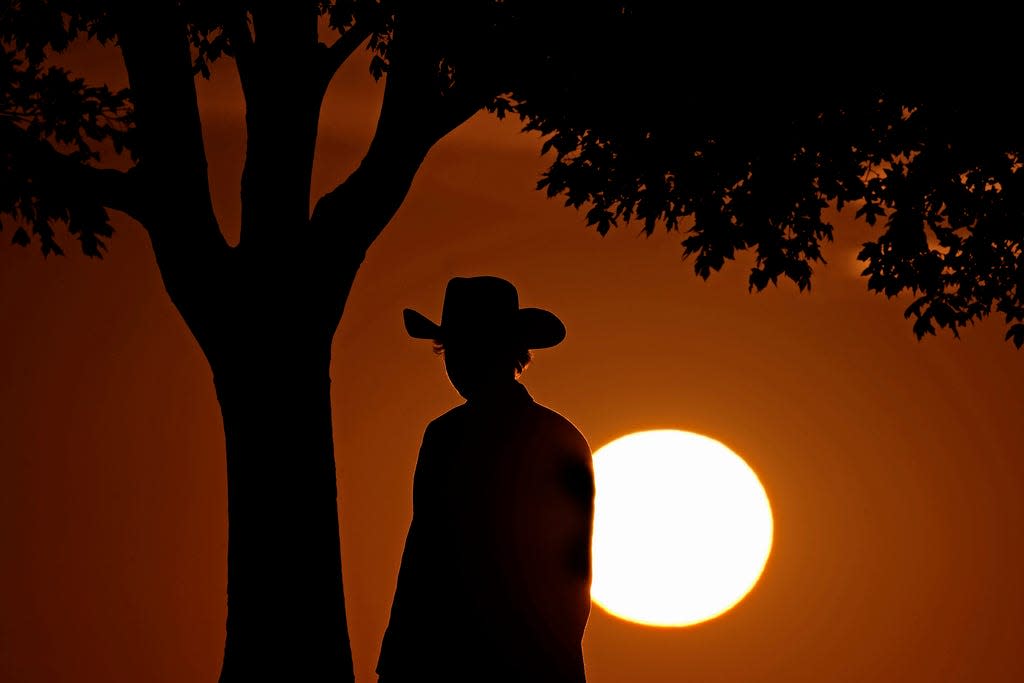Who does daylight saving time benefit and hurt? Science knows

The weather is slowly warming, the days are getting longer, and our part of the world is about to go from brown to green. What a wonderful time of the year!
Everything seems like it is going back in the right direction until ... we steal an hour from your weekend! This coming weekend, you will advance the time on all your clocks by one hour. You will completely skip that hour and your weekend will be 47 hours long instead of 48 hours long. That seems rude.
Daylight saving history
Daylight saving time was first suggested by Benjamin Franklin, who noticed that by setting the clocks forward in summer there would be more productive time after the normal work hours. In the winter, when the days become shorter and the growing season is over for most, the clocks would shift backwards and daylight saving time would end for the year.
It was also believed to reduce the amount of energy that we consume in the evenings.
New science
New research published in the journal of Behavioral Nutrition and Physical Activity shows that daylight saving time increases the activity and health in children. The study was done by the University of Bristol in London.
Over 23,000 kids ages 5-16 were studied in nine countries, including the United States. Researchers examined the connection between the time of sunset and physical activity levels using electronic devices that measure body movement.
The study found that kids had 15 to 20% greater activity in a day where the sun set after 9:00 p.m. compared to a sunset of 5:00 p.m. The data held true even when the researchers adjusted for weather and temperature differences at each test site.
Keep daylight saving time permanent? Not so fast!
While the extra daylight at night might be good for kids and their activity levels, a very long list of research has found daylight saving time is quite bad for adults.
There are noticeably more heart attacks each spring when the switch occurs. Doctors believe this is because the entire nation loses nearly an hour of sleep that weekend, and sleep has always been connected to health.
Mood disorders and an increase in traffic accidents also go up just after daylight saving time begins.
One solution many countries are toying with: keeping daylight saving time permanent. Those negative impacts are because of the loss of an hour, but if we just never go back things will be fine, right? Again, not so fast.
A growing number of researchers are finding that staying on daylight saving time permanently would still have some negative impacts on humans. They acknowledge that eliminating the flip-flopping of times would help, but it still would keep us a little off track.
The reason for this: for millions of years, animals evolved to operate around the very predictable cycle of sunlight and darkness. We don’t think about it, but our brains operate in the patterns that they do because of the sun’s patterns. But then we changed it!
We changed a cycle we were created with and now noon no longer represents when the sun is highest in the sky. Our brains unconsciously see the sun and think it’s one time, while our clocks and rules tell us it is another. Seems tiny, but scientists are now learning that the seemingly tiny difference between natural time and real time is throwing millions of people off their natural, healthy cycle.
The debate will continue, but if we are going to keep daylight savings time, I have a proposal. Keep the end of daylight saving time in the fall on a weekend. Everyone will get an extra hour of sleep.
But move the start of daylight saving time in the spring to the middle of the day on Monday. Instead of losing an hour of sleep, we lose an hour of Monday!
Mike Szydlowski is a science teacher and zoo facilitator at Jefferson STEAM School.
TIME FOR A POP QUIZ
Does daylight saving time start at the same time in the Northern and Southern hemispheres? Why or why not?
In the exercise and daylight study, why did the author point out that the data was adjusted for the weather?
Why do some scientists say that staying on daylight saving time permanently is unhealthy?
In July, the North Pole receives 24 hours of sunlight a day. How many hours of sunlight would the South Pole get?
Do you think that daylight saving time should be permanent? Why or why not?
LAST WEEK'S QUIZ ANSWERS
Why might you be making your body stay sick longer by taking medicines to reduce your stuffy and runny nose?
Your body purposefully created the stuffy or runny nose to trap germs. By removing that barrier, more germs can make it into your body.
What do you think the word rhinovirus means?
Based on Greek terms, it means a virus that affects the nose — or a cold.
What is the biological reason your nose runs in the cold weather?
Your nose produces extra mucus when cold to try to warm and moisten the cold, dry air before it enters your body.
Not counting any illnesses, how many calories does your body recycle in a year due to snot recycling?
365 days in a year x 200 calories a day = 73,000 calories a year.
What are two examples of how mucus keeps our body healthy?
Mucus helps trap germs and viruses before they enter the body. Mucus also helps to warm and moisten winter air before it hits our lungs.
This article originally appeared on Columbia Daily Tribune: The science behind who benefits and loses from daylight saving time

